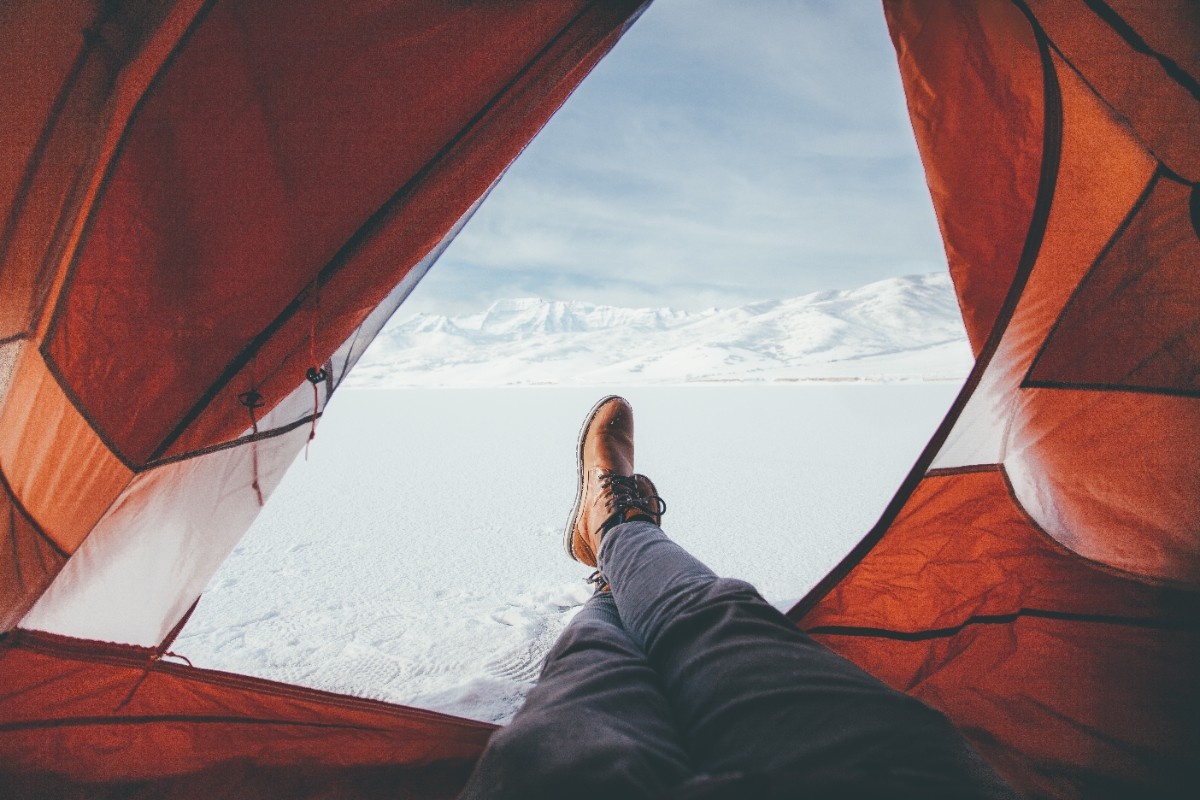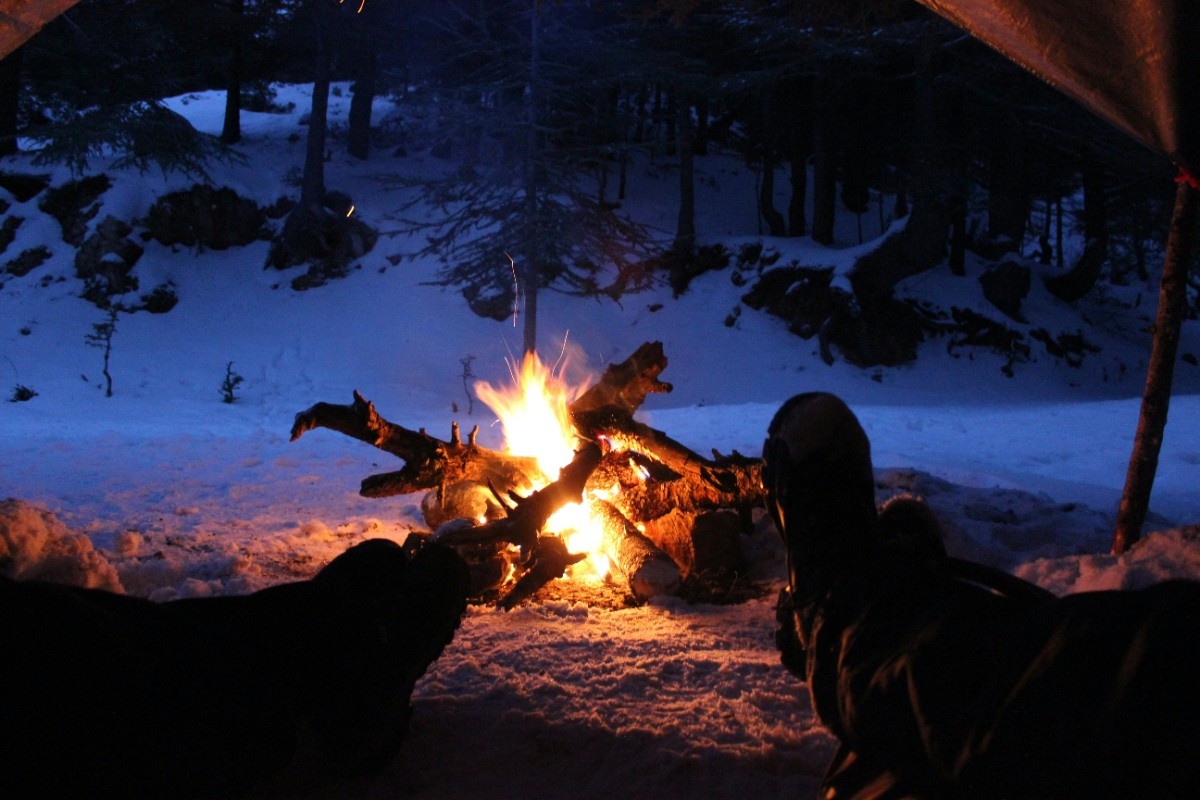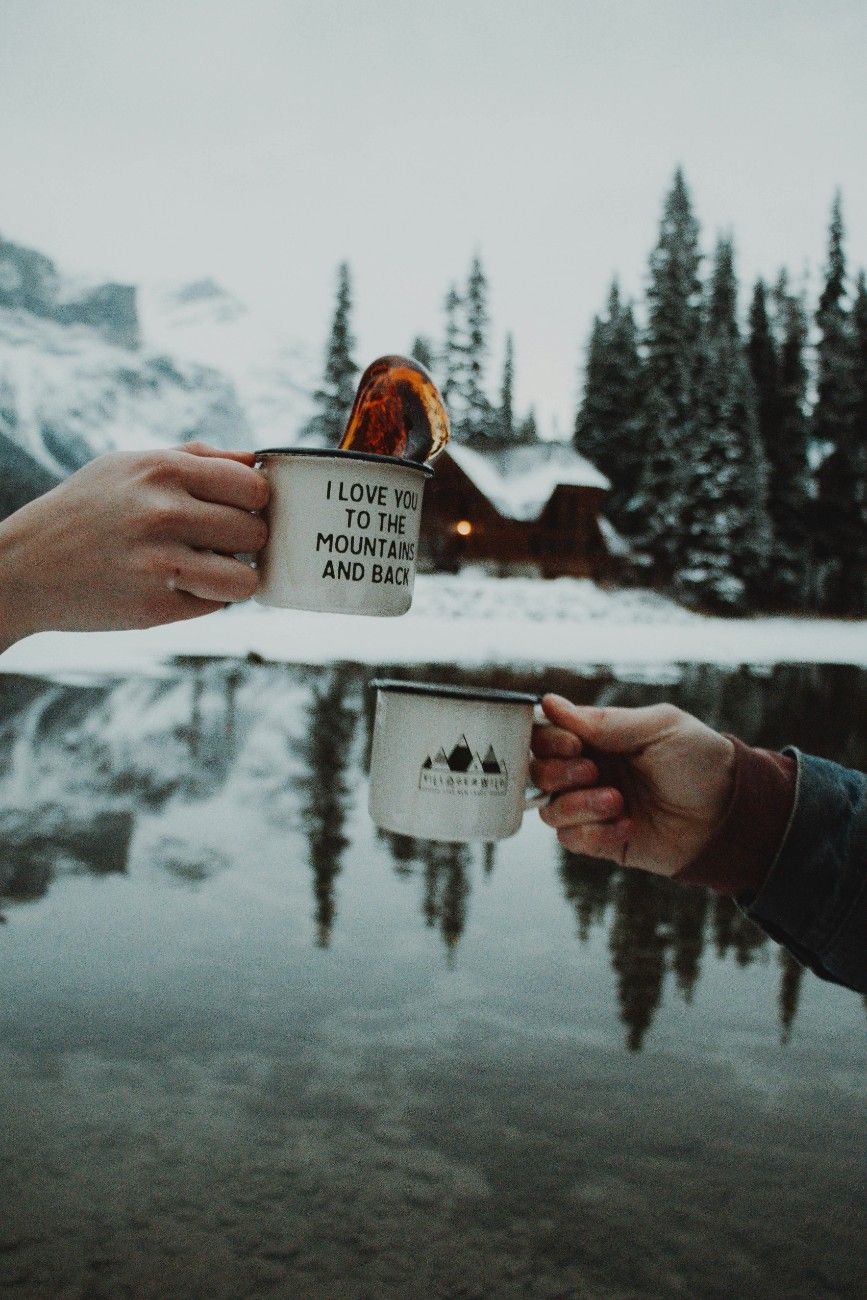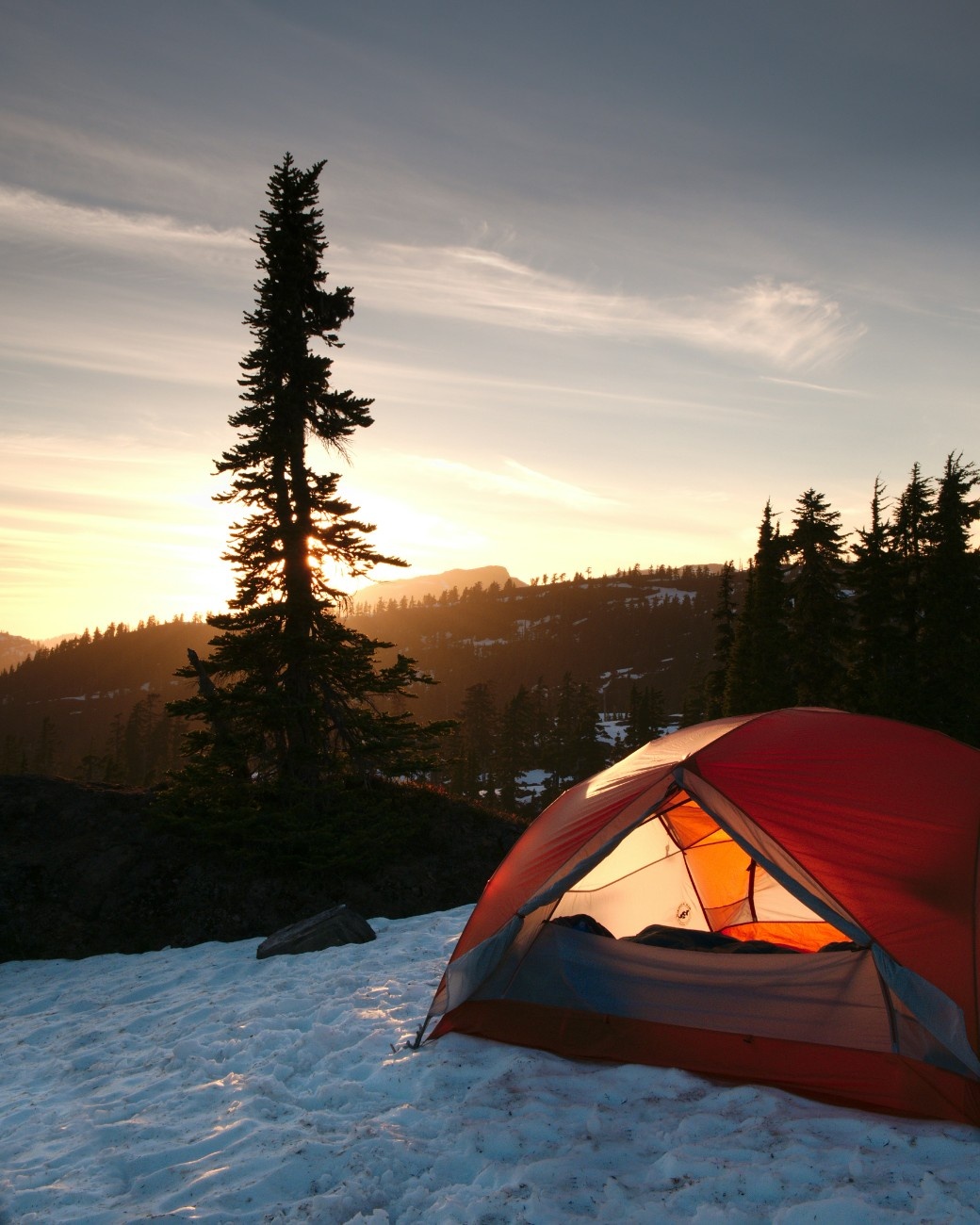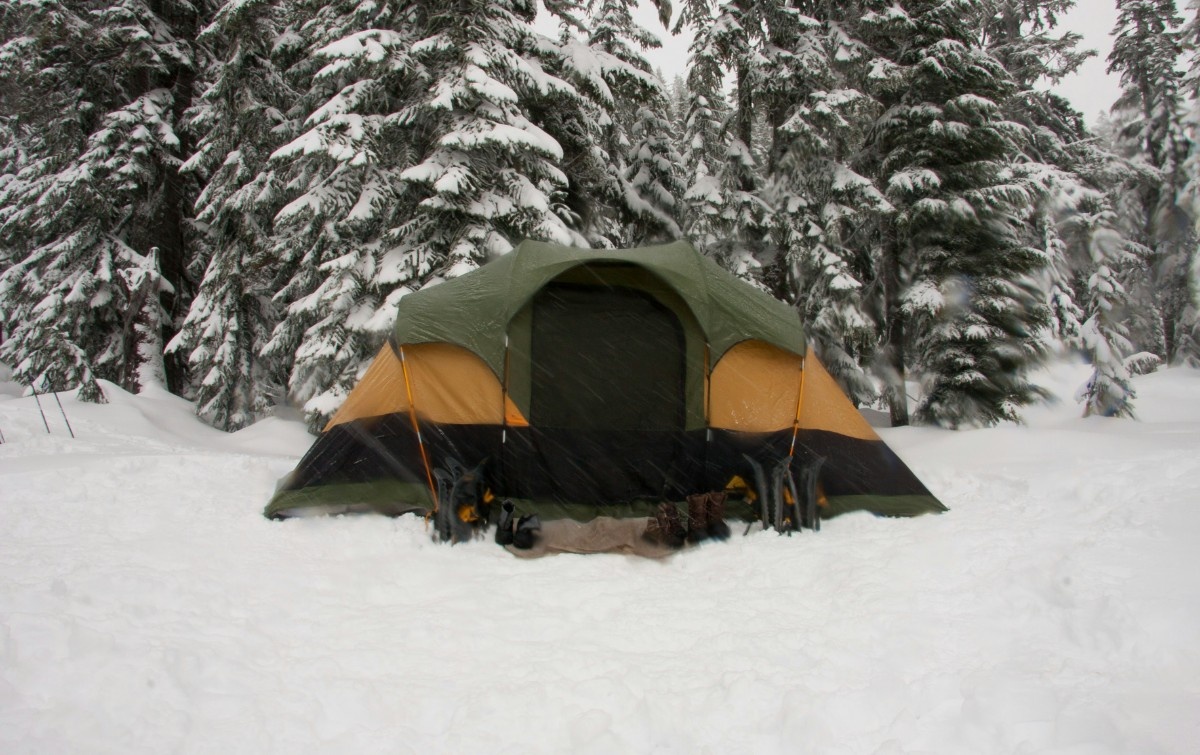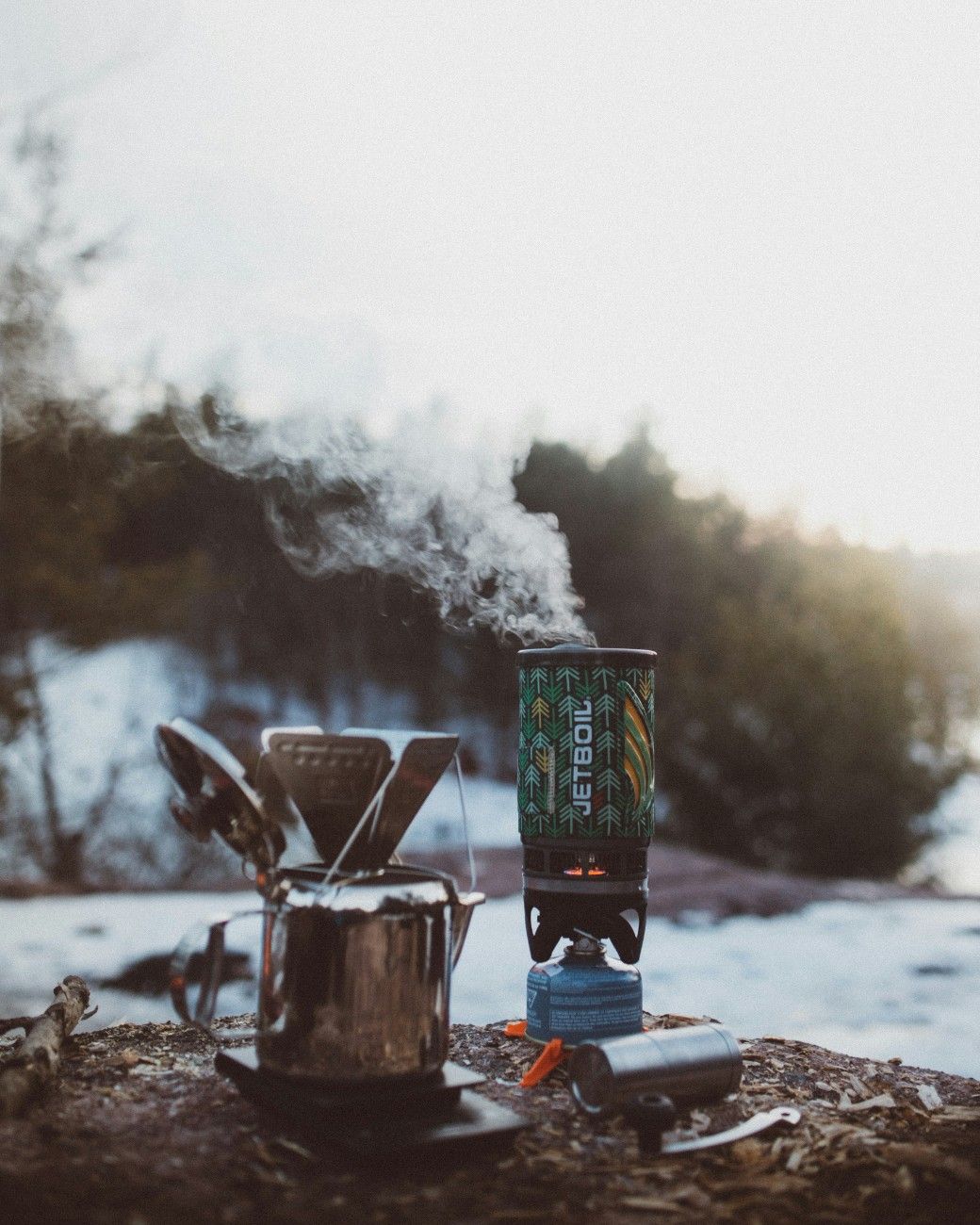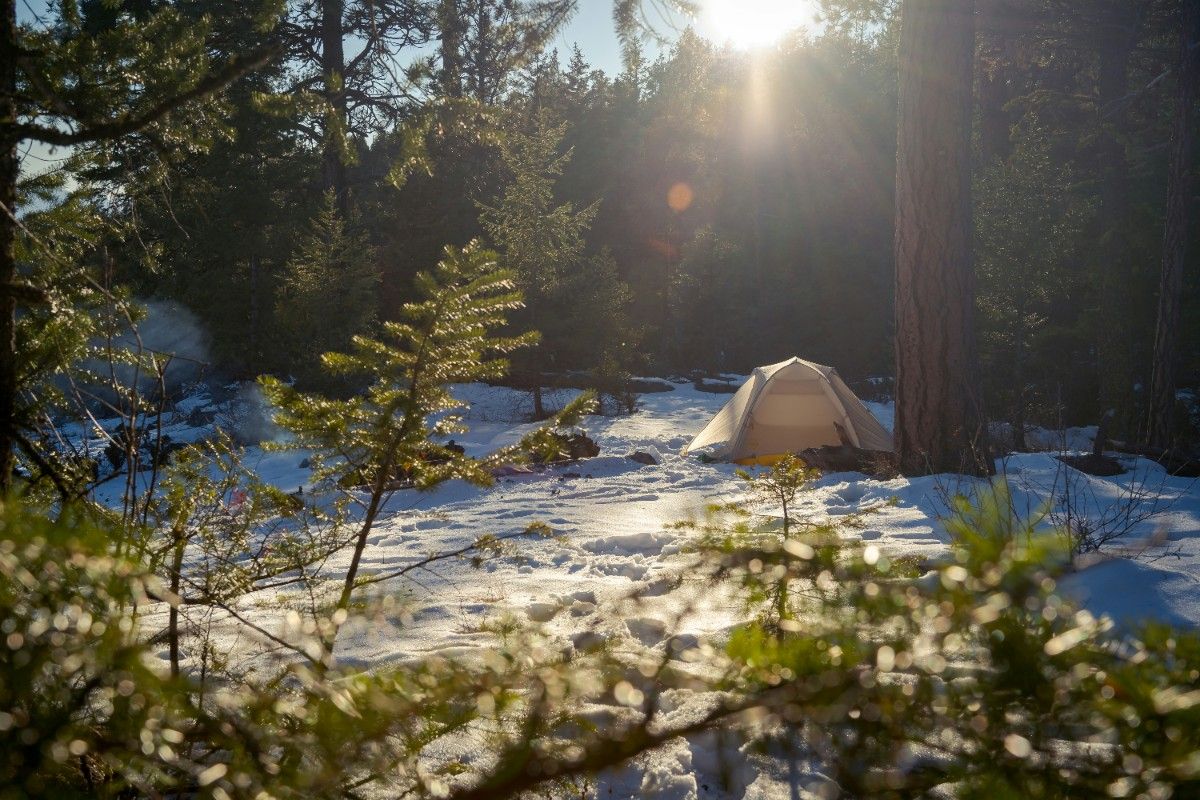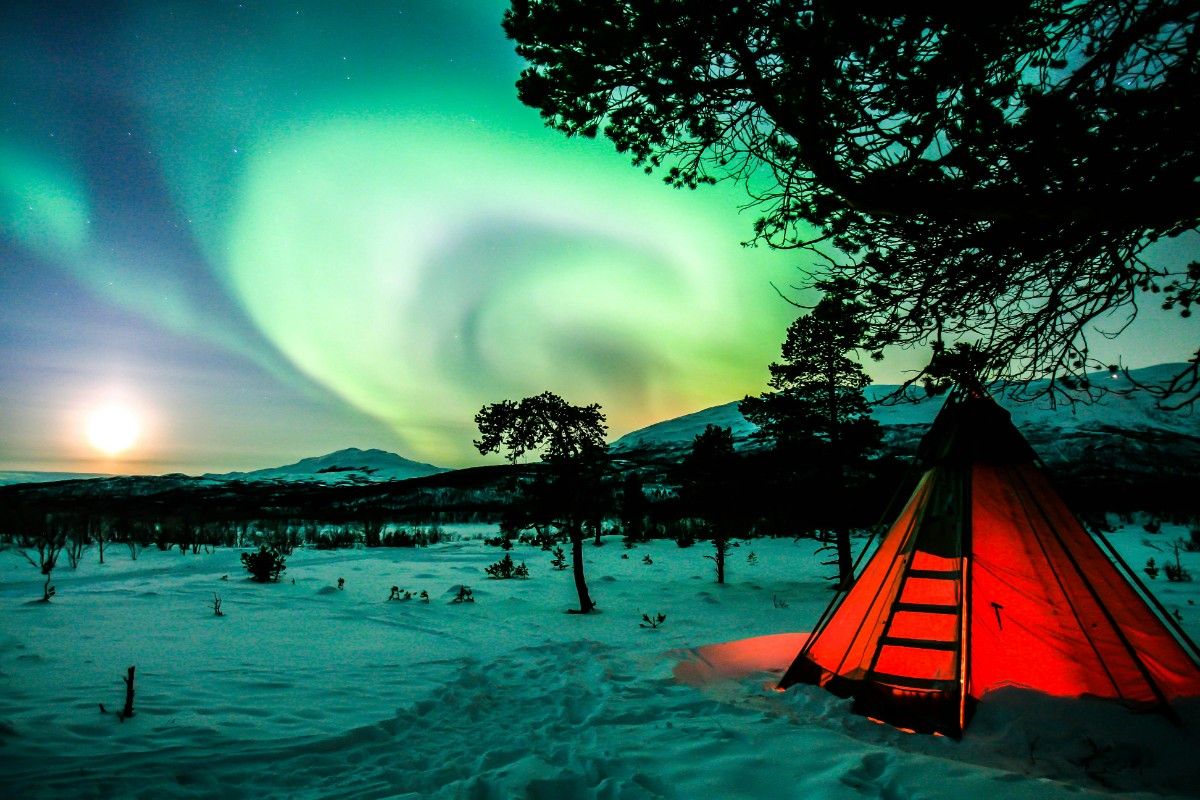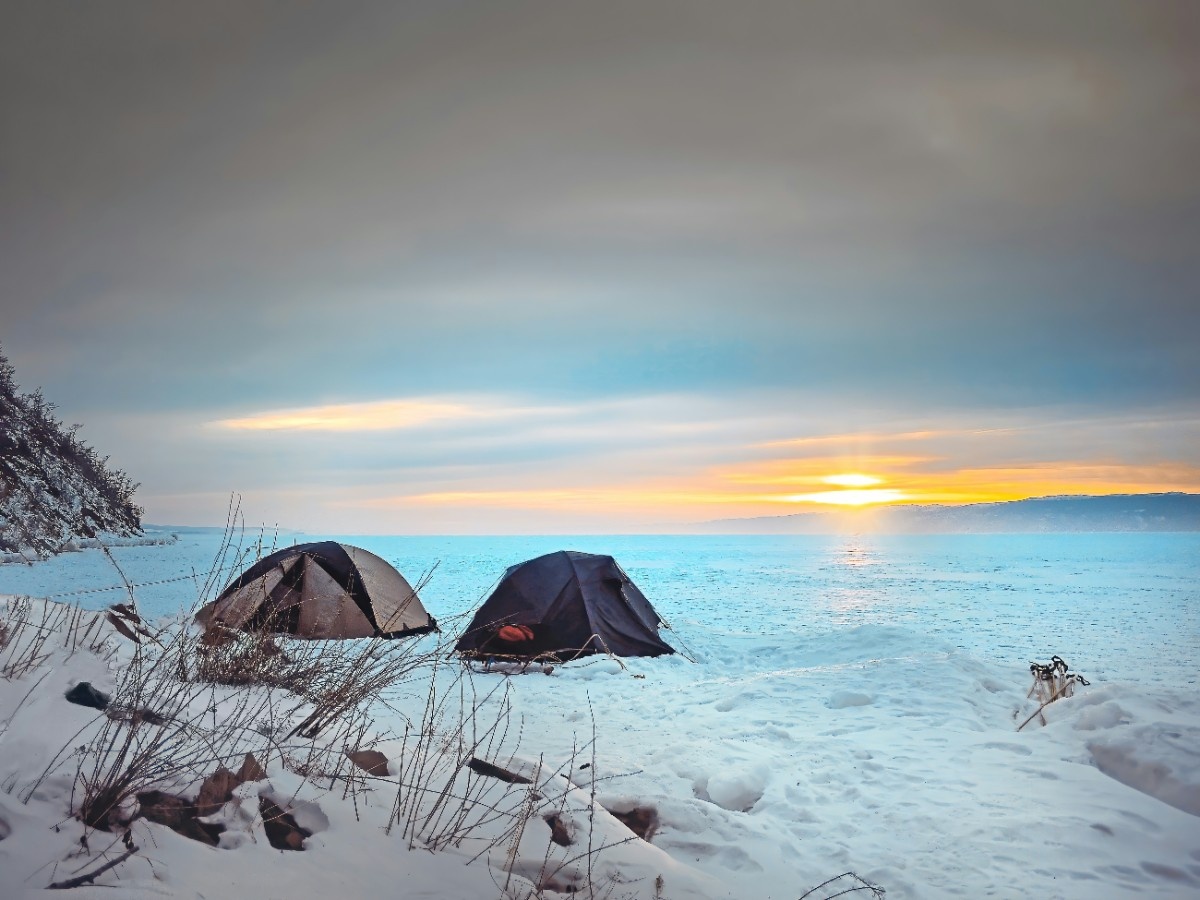The Ultimate Guide to Winter Camping in the UK
Preparing for Your Winter Camping Trip
Choosing the Right Location
When planning your winter camping adventure, selecting the appropriate location is crucial. Camping in winter requires careful consideration of various factors to ensure a safe and enjoyable experience. Begin by researching areas that are suitable for cold-weather camping and remain accessible during the winter months. Many popular summer camping destinations may be closed or difficult to reach when snow and ice set in, so it's essential to focus on locations that are specifically equipped for winter visitors.
For those considering camping winter UK options, areas such as the Scottish Highlands, the Lake District, or Snowdonia National Park offer stunning winter landscapes and are well-prepared for cold-weather camping. These regions often have designated winter camping areas and may provide additional facilities to support campers during the colder months. However, it's crucial to check local regulations and obtain any necessary permits before setting up your winter camp.
When evaluating potential campsites, look for locations that offer natural protection from the elements. Areas with dense tree cover can provide shelter from strong winds, while south-facing slopes may receive more sunlight during the short winter days. Avoid low-lying areas where cold air can settle, as these spots tend to be significantly colder than surrounding higher ground.
Consider the proximity to emergency services and the availability of winter-specific amenities. Some winter camping UK sites may offer heated facilities or emergency shelters, which can be invaluable in extreme weather conditions. Additionally, research the area's typical winter weather patterns, including average temperatures, snowfall, and wind speeds, to better prepare for the conditions you're likely to encounter.
Timing and Weather Considerations
The timing of your winter camping trip plays a significant role in your overall experience. Winter days are shorter, so plan your arrival and departure times accordingly. Aim to reach your campsite with ample daylight remaining, allowing sufficient time to set up camp and familiarise yourself with the surroundings before darkness falls.
Weather conditions can be unpredictable and extreme during winter, making it essential to monitor forecasts closely in the days leading up to your trip. Pay attention to factors such as temperature, wind speed, and precipitation, as these can significantly impact your camping experience and safety. Be prepared to adjust your plans or postpone if severe weather is expected.
Consider the seasonal variations within winter itself. Early winter may offer milder temperatures but less snow cover, while mid-winter typically provides the most snow but also the coldest temperatures. Late winter can bring unpredictable weather with potential thaws and refreezes, which can affect trail conditions and campsite accessibility.
Physical Preparation and Skill Development
Winter camping can be more physically demanding than its warm-weather counterpart, so it's crucial to ensure you're in good shape before embarking on your trip. Engage in regular exercise and cold-weather activities to build your endurance and acclimatise to lower temperatures. Activities such as winter hiking, snowshoeing, or cross-country skiing can help prepare your body for the challenges of camping in cold conditions.
In addition to physical preparation, it's essential to develop and refine your winter camping skills. Practice setting up your tent in cold and windy conditions, learn how to properly layer your clothing for maximum warmth, and familiarise yourself with winter-specific camping techniques such as snow shelter construction and cold-weather fire starting. These skills can be crucial for your comfort and safety during your winter camping adventure.
Consider taking a winter camping course or joining a guided trip if you're new to cold-weather camping. These experiences can provide valuable hands-on training and help you build confidence in your abilities. Many outdoor organisations and national parks offer winter skills courses that cover essential topics such as navigation in snow-covered terrain, avalanche awareness, and cold-weather first aid.
Essential Winter Camping Equipment
Shelter and Sleeping System
When it comes to winter camping equipment, your shelter and sleeping system are of paramount importance. A four-season tent is essential for camping in a tent in the winter, as these are designed to withstand heavy snow loads and strong winds. Look for features such as a sturdy frame, robust fabric, and a low-profile design to shed snow effectively.
Your sleeping bag is crucial for staying warm during cold nights. Choose a bag rated for temperatures lower than what you expect to encounter on your trip. Down-filled bags offer an excellent warmth-to-weight ratio but lose insulating properties when wet, while synthetic bags perform better in damp conditions.
Equally important is your sleeping pad, which insulates you from the cold ground. Opt for an insulated air mattress or a closed-cell foam pad with a high R-value (insulation rating). The Therm-a-Rest sleeping mats are excellent choices for winter camping. Some campers prefer to use two sleeping pads for extra insulation – a closed-cell foam pad beneath an inflatable pad.
Don't forget accessories like a sleeping bag liner, which can add extra warmth and keep your bag clean, and a stuff sack for compressing your sleeping bag during transport. A small pillow or stuffable pillow case can also enhance your sleeping comfort.
Clothing and Layering System
Proper clothing is essential for staying warm and dry while camping in winter. The key to effective winter clothing is layering, which allows you to adjust your insulation as conditions and activity levels change. Start with a moisture-wicking base layer made from materials like merino wool or synthetic fabrics. This layer helps move sweat away from your skin, keeping you dry and warm.
Add an insulating mid-layer, such as fleece or synthetic insulated jackets, to trap warm air close to your body. You may use multiple mid-layers depending on the temperature. Top it off with a waterproof and breathable outer shell to protect you from wind and precipitation. Look for jackets and pants with features like reinforced wear areas, plenty of pockets, and ventilation options.
Don't forget to protect your extremities. Bring multiple pairs of warm, moisture-wicking socks, and consider sock liners for additional insulation. Insulated, waterproof boots are essential for winter camping. For your hands, use a layering system starting with thin liner gloves for dexterity, adding insulating mid-layer gloves, and topping with waterproof mittens or gloves. Always pack extra gloves in case one pair gets wet.
A warm hat or beanie is crucial, as a significant amount of heat can be lost through your head. A balaclava or neck gaiter provides additional protection for your face and neck. Consider bringing goggles or sunglasses to protect your eyes from snow glare and wind.
Setting Up Your Winter Campsite
Selecting the Ideal Campsite
When camping in winter, choosing the right spot for your campsite is crucial for comfort, safety, and enjoyment. As you scout for the perfect location to set up your winter camp, prioritise areas that offer natural protection from the elements. Look for dense stands of trees or large boulders that can serve as windbreaks, shielding your camp from strong gusts that can make your stay uncomfortable and potentially dangerous. However, be cautious of potential hazards like dead trees or branches that could fall under the weight of snow or ice.
Avoid setting up camp in low-lying areas where cold air tends to settle, as these spots can become significantly colder than the surrounding terrain. Similarly, steer clear of avalanche-prone slopes and areas beneath cornices or other snow formations that could pose a risk. If you're camping winter UK, be particularly aware of the rapidly changing weather conditions that can affect mountainous regions.
If possible, choose a location that receives some sunlight during the day. This can help warm your campsite and provide a psychological boost during the short winter days. South-facing slopes often receive more direct sunlight and can be warmer than north-facing areas. However, balance this with the need for natural wind protection.
Consider the proximity to water sources when selecting your campsite. While you may need to melt snow for water, having a nearby stream or lake can be convenient. Just ensure you're camping at a safe distance from water bodies to avoid any potential flooding or ice breakage issues.
Lastly, always adhere to local regulations and Leave No Trace principles when choosing your campsite. Some areas may have specific rules for winter camping UK enthusiasts, such as designated winter camping areas or restrictions on camping near certain natural features.
Preparing the Ground and Pitching Your Tent
Once you've selected your campsite, it's time to prepare the area for your tent and other camp amenities. If there's deep snow, you'll need to pack it down to create a solid foundation for your tent. This process, known as "stomping out" your tent site, involves walking back and forth over the area in a systematic pattern, compressing the snow with your boots or snowshoes.
After packing down the snow, let it set for about an hour if possible. This allows the disturbed snow to refreeze, creating a firmer surface for your winter camping tent. If time permits, you can also build a snow wall around your tent site for additional wind protection. This can be particularly useful when camping in a tent in the winter in exposed areas.
When it comes to pitching your tent, a few extra steps are necessary to ensure stability and comfort in winter conditions. Clear any loose snow from the packed area before laying out your tent. If using snow stakes, bury them horizontally in the snow and pack snow on top for maximum hold. Alternatively, use "deadman" anchors by tying your guy lines to stuffed stuff sacks or branches and burying them in the snow.
Ensure all guy lines are taut to maintain the tent's shape under potential snow load. Many experienced winter campers recommend creating a small "cold well" just inside the tent entrance by digging out a shallow depression. This allows cold air to sink and collect, keeping it away from your sleeping area.
Consider the orientation of your tent when setting it up. Position the entrance away from the prevailing wind direction to minimise drafts and snow blowing into your tent. If your tent has multiple doors, you might want to use snow to block off one of them, creating a single, more manageable entrance.
Creating a Functional Camp Layout
Efficient organisation of your living space is crucial when camping in the winter in a tent. Beyond your sleeping area, consider creating separate zones for cooking, gear storage, and socialising. This not only helps keep your camp organised but also minimises the risk of accidents and keeps cooking smells away from your sleeping area.
If you're planning an extended stay or winter camping with a group, consider building a snow kitchen separate from your sleeping area. This can be a simple wind break or a more elaborate snow structure, depending on your skills and the duration of your stay. A well-designed snow kitchen can provide a comfortable area for meal preparation and socialising, protected from the wind and cold.
For gear storage, you might want to dig out a snow cave or build a simple snow shelf. This keeps your equipment organised, protected from the elements, and out of your way in the tent. Remember to keep your gear elevated off the snow when possible to prevent it from freezing to the ground.
Designate a separate area for bathroom use, well away from your camp and any water sources. In deep snow, you may need to create a path to this area. Remember to practice Leave No Trace principles, even in winter. Pack out all waste, including toilet paper, unless local regulations state otherwise.
Lastly, if fires are permitted in your camping area, choose a spot away from overhanging branches and clear the area of snow down to the ground. Use a fire pan if possible to minimise impact. Remember that starting and maintaining a fire in winter conditions can be challenging, so come prepared with fire-starting materials and dry tinder.
Staying Warm and Comfortable While Winter Camping
Mastering the Art of Layering
The key to staying warm while winter camping lies in understanding and mastering the art of layering. This technique allows you to adjust your clothing to match your activity level and the changing weather conditions, ensuring you stay warm without overheating and sweating, which can lead to rapid cooling when you stop moving.
The layering system typically consists of three main layers: the base layer, the insulating layer, and the outer shell. Your base layer, also known as the next-to-skin layer, should be made of moisture-wicking material like merino wool or synthetic fabrics. This layer helps move sweat away from your skin, keeping you dry and warm. Avoid cotton as it retains moisture and can lead to rapid heat loss when wet.
The middle, or insulating layer, traps warm air close to your body. Materials like fleece, wool, or synthetic insulated jackets work well for this layer. You may use multiple insulating layers depending on the temperature. The outer layer, also called the shell layer, should be windproof and waterproof to protect you from the elements. Look for breathable materials like Gore-Tex to allow moisture to escape while keeping wind and water out.
Remember to adjust your layers as you engage in different activities. Remove layers when you're active to prevent overheating and sweating, and add them back when you stop to rest. It's often said in the winter camping community that "if you're warm when you start hiking, you're wearing too much."
When camping in winter, pay extra attention to your extremities. Use a layering system for your hands as well, starting with a thin liner glove for dexterity, adding an insulating mid-layer glove, and topping with waterproof mittens or gloves. For your feet, wear warm, moisture-wicking socks and insulated, waterproof boots. Consider using sock liners to add an extra layer of insulation and moisture management.
Don't forget about your head and neck. A significant amount of heat can be lost through your head, so always wear a warm hat or beanie. A balaclava or neck gaiter can provide additional protection for your face and neck, which is particularly important when winter camping UK where wind chill can be a significant factor.
Creating a Warm Sleeping Environment
A good night's sleep is essential for enjoying your winter camping trip, and creating a warm sleeping environment is crucial for achieving this. Start with a sleeping bag rated for temperatures lower than what you expect to encounter. Remember that sleeping bag temperature ratings are usually based on an average person wearing a single layer of clothing, so you may want to choose a bag rated for even colder temperatures to ensure comfort.
To boost the warmth of your sleeping bag, consider using a sleeping bag liner. Not only does this add extra insulation, but it also helps keep your bag clean, extending its life. Some campers also use a vapour barrier liner, which helps prevent moisture from your body from reaching and compromising the insulation in your sleeping bag.
Insulating yourself from the ground is just as important as having a warm sleeping bag. Use a sleeping pad with a high R-value (insulation rating) to prevent heat loss to the cold ground. For winter camping, many experienced campers use two pads: a closed-cell foam pad directly on the ground, topped with an inflatable pad for added comfort and insulation.
Before getting into your sleeping bag, change into clean, dry base layers. Avoid wearing too many layers inside your sleeping bag, as this can compress the insulation and reduce its effectiveness. Instead, place extra layers of clothing around you inside the bag for added warmth without compression.
To further enhance your sleeping warmth, consider using hot water bottles or hand warmers inside your sleeping bag. Fill a water bottle with hot water (not boiling) and place it in your sleeping bag about 30 minutes before you plan to sleep. This will pre-warm your bag and provide lasting heat throughout the night. Place these heat sources near major blood vessels, such as between your thighs or in the small of your back, for maximum effectiveness.
Lastly, eat a high-calorie snack before bed to fuel your body's internal furnace. Your body will generate heat as it digests the food, helping to keep you warm through the night. Just be sure to store any food away from your sleeping area to avoid attracting wildlife to your tent.
Winter Camping Activities and Skills
Mastering Winter Hiking and Snowshoeing
Winter camping offers a unique opportunity to explore snow-covered landscapes through activities like winter hiking and snowshoeing. These pursuits allow you to venture beyond your campsite and immerse yourself in the serene beauty of the winter wilderness. However, they require specific skills and considerations to ensure safety and enjoyment.
When embarking on winter hikes or snowshoe treks from your winter camp, it's crucial to be prepared for the challenges posed by snow-covered terrain. Navigation becomes more difficult as familiar landmarks and trail markers may be obscured by snow. Develop your map and compass skills, and consider using a GPS device as a backup. Always carry a detailed topographic map of the area and plan your route carefully before setting out.
Snowshoeing is an excellent way to traverse deep snow efficiently. If you're new to snowshoeing, practice the basic techniques before your trip. Learn how to walk with a slightly wider stance to accommodate the snowshoes, and master the technique of kicking steps when ascending steep slopes. When descending, keep your weight slightly back and use the cleats or crampons on your snowshoes for traction.
Energy management is crucial when hiking or snowshoeing in winter conditions. Moving through snow requires significantly more energy than hiking on clear trails. Pace yourself, take frequent breaks, and stay hydrated. Even though it's cold, you'll still sweat during physical activity, so it's important to drink water regularly to avoid dehydration.
If your winter camping UK adventure takes you into mountainous areas, avalanche awareness becomes critical. Learn to recognise avalanche terrain and danger signs. Consider taking an avalanche safety course before venturing into avalanche-prone areas. Always check the local avalanche forecast before your trip and plan your route to avoid high-risk areas.
Remember that winter days are short, so start your hikes early and allow plenty of time to return to camp before darkness falls. Carry a headlamp with extra batteries in case your hike takes longer than expected. Also, be prepared for rapidly changing weather conditions. Bring extra layers, food, and emergency shelter in case you need to hunker down unexpectedly.
Developing Snow Shelter Construction Skills
One of the most valuable skills for winter camping is the ability to construct snow shelters. Not only can this skill provide emergency protection in adverse conditions, but it can also be a fun and rewarding camp project that enhances your winter wilderness experience.
The snow cave is one of the most effective emergency shelters. To build a snow cave, you'll need a steep snow bank or drift at least 6 feet deep. Start by digging a small entrance tunnel that slopes upward into the snow bank. As you dig deeper, expand the cave upward and to the sides, creating a dome-shaped interior. The sleeping platform should be higher than the entrance to trap warm air. Create a small ventilation hole in the roof to prevent carbon dioxide buildup.
A quinzee is another type of snow shelter that can be built where deep, compacted snow banks aren't available. To create a quinzee, pile snow into a large mound, at least 6-8 feet high and 8 feet in diameter. Insert small sticks into the mound as depth guides. Allow the snow to settle and harden for a few hours, then dig out the interior, stopping when you reach the ends of the sticks. This ensures your walls are thick enough for stability.
For those interested in traditional winter survival skills, learning to build an igloo can be a fascinating challenge. While more complex than other snow shelters, a well-constructed igloo can be surprisingly warm and stable. The key to igloo building lies in cutting and placing snow blocks in a spiral pattern, with each level leaning slightly inward to create a dome shape.
Regardless of the type of snow shelter you're building, always ensure proper ventilation to prevent carbon dioxide buildup. Also, be aware that constructing snow shelters can be physically demanding and time-consuming. Practice these skills in safe conditions before relying on them in an emergency situation.
Winter Photography and Nature Observation
Winter camping provides unique opportunities for photography and nature observation. The winter landscape, with its stark contrasts and ethereal light, can yield stunning photographs. However, winter photography comes with its own set of challenges and considerations.
Firstly, protect your camera equipment from the cold and moisture. Batteries drain faster in cold temperatures, so carry spares and keep them warm in an inside pocket. Condensation can be an issue when moving between cold outdoor air and the warm interior of your tent, so allow your camera to acclimate slowly when changing environments.
When photographing snowy scenes, be aware that your camera's light meter can be fooled by the bright white snow, often resulting in underexposed images. Learn to use your camera's exposure compensation feature to adjust for this. Alternatively, spot meter on a mid-tone area of the scene for more accurate exposure.
Winter provides excellent conditions for observing and identifying animal tracks. Fresh snow acts as a canvas, recording the movements of wildlife. Learn to recognise common animal tracks and patterns. Observe how different animals adapt to winter conditions, from the snowshoe hare's oversized feet to the ptarmigan's feathered legs.
For those interested in plant life, winter offers a different perspective on forest ecology. Learn to identify trees by their bark and branch patterns when they're devoid of leaves. Look for signs of wildlife feeding on winter-persistent berries or tree buds.
Lastly, don't forget to look up. Winter nights, especially in remote camping winter UK locations, can offer spectacular stargazing opportunities. The long nights and often clear winter skies provide perfect conditions for observing constellations or even catching a glimpse of the Northern Lights in northern locations.
Safety Considerations and Emergency Preparedness for Winter Camping
Understanding and Mitigating Cold-Weather Risks
When camping in winter, understanding and preparing for cold-weather risks is paramount. Hypothermia and frostbite are two of the most significant dangers faced by winter campers, and knowing how to prevent, recognise, and treat these conditions can be lifesaving.
Hypothermia occurs when your body loses heat faster than it can produce it, causing a dangerous drop in body temperature. Prevention is key: stay dry, as wet clothes dramatically increase heat loss. Use the layering system discussed earlier to regulate your body temperature effectively. Stay hydrated and well-fed, as your body needs fuel to generate heat. Learn to recognise the early signs of hypothermia, which include shivering, confusion, and loss of coordination. If you suspect hypothermia, immediately get the affected person into dry clothes and a warm sleeping bag. Provide warm, sweet drinks if the person is conscious, and seek medical help if symptoms are severe.
Frostbite is tissue damage caused by freezing, most commonly affecting extremities like fingers, toes, nose, and ears. To prevent frostbite, keep extremities warm and avoid tight clothing that can restrict circulation. Stay active to promote blood flow, and use chemical hand and foot warmers for extra protection in extremely cold conditions. If you suspect frostbite, do not rub the affected area, as this can cause further tissue damage. Instead, slowly warm the area using body heat or warm (not hot) water.
Another cold-weather risk to be aware of is carbon monoxide poisoning. This can occur if you use stoves or heaters inside your tent without proper ventilation. Always ensure adequate ventilation when using any fuel-burning device, and never use them in enclosed spaces while sleeping.
Navigation and Preventing Getting Lost
Winter conditions can make navigation challenging, even for experienced campers. Familiar landmarks may be obscured by snow, and trails can disappear under a white blanket. Developing strong navigation skills is crucial for safe winter camping.
Always carry a map and compass, and know how to use them. While GPS devices can be helpful, don't rely solely on electronic navigation, as batteries can fail in cold conditions. Before your trip, study the map of your camping area and plan your routes carefully. Identify prominent landmarks that will still be visible in winter conditions.
Learn to navigate in whiteout conditions using terrain features and compass bearings. In a whiteout, it's easy to become disoriented, so take frequent compass readings to ensure you're maintaining your intended direction. If visibility is very poor, it may be safer to set up camp and wait for conditions to improve rather than risking getting lost.
Always leave a detailed trip plan with someone at home, including your expected return time. This ensures that someone knows where to look for you if you don't return as planned. Consider carrying a personal locator beacon or satellite messenger device for emergency communication in remote areas.
Emergency Shelter and Fire Starting
In a winter emergency, the ability to quickly create shelter and start a fire can be lifesaving. Practice building emergency snow shelters like snow caves and quinzees before your trip. Carry essential tools like a shovel and saw for shelter construction. Understand the principles of thermal insulation to make your shelter as warm as possible, and always ensure proper ventilation in snow shelters to prevent carbon dioxide buildup.
Fire starting in wet and cold conditions requires special skills and preparation. Carry multiple fire-starting tools (waterproof matches, lighters, ferrocerium rods) and know how to use them effectively in adverse conditions. Bring emergency tinder that will ignite easily, such as petroleum jelly-soaked cotton balls. Learn how to find dry fuel in a snow-covered environment, such as the dead lower branches of evergreen trees.
Practice starting fires in wet and windy conditions before your trip. In an emergency, a fire can provide warmth, a means to melt snow for water, and a signal for rescuers. However, always follow local regulations regarding fire use and practice Leave No Trace principles.
First Aid and Emergency Response
When winter camping, it's crucial to be prepared for medical emergencies. Carry a comprehensive first aid kit that includes cold-specific items such as chemical hand warmers and blister treatment. Learn how to recognise and treat cold-weather injuries like hypothermia and frostbite before your trip.
Understand how to improvise splints and stretchers using camping gear, as injuries like sprains or fractures can be more likely on slippery winter terrain. Know how to signal for help using visual and audible methods. Bright-colored fabrics, signal mirrors, and whistles can all be useful for attracting attention in an emergency.
Consider taking a wilderness first aid course before embarking on remote winter camping trips. These courses provide invaluable hands-on training in dealing with emergencies in backcountry settings where professional medical help may be hours or days away.
Remember, the best emergency response is prevention. Stay within your skill level, make conservative decisions, and always prioritise safety over reaching a destination or sticking to a plan. With proper preparation and respect for the winter environment, you can enjoy the unique beauty and tranquillity of winter camping while staying safe and comfortable.
Related Articles

Let us know you agree to cookies
We use marketing, analytical and functional cookies as well as similar technologies to give you the best experience. Third parties, including social media platforms, often place tracking cookies on our site to show you personalised adverts outside of our website.
We store your cookie preferences for two years and you can edit your preferences via ‘manage cookies’ or through the cookie policy at the bottom of every page. For more information, please see our cookie policy.
